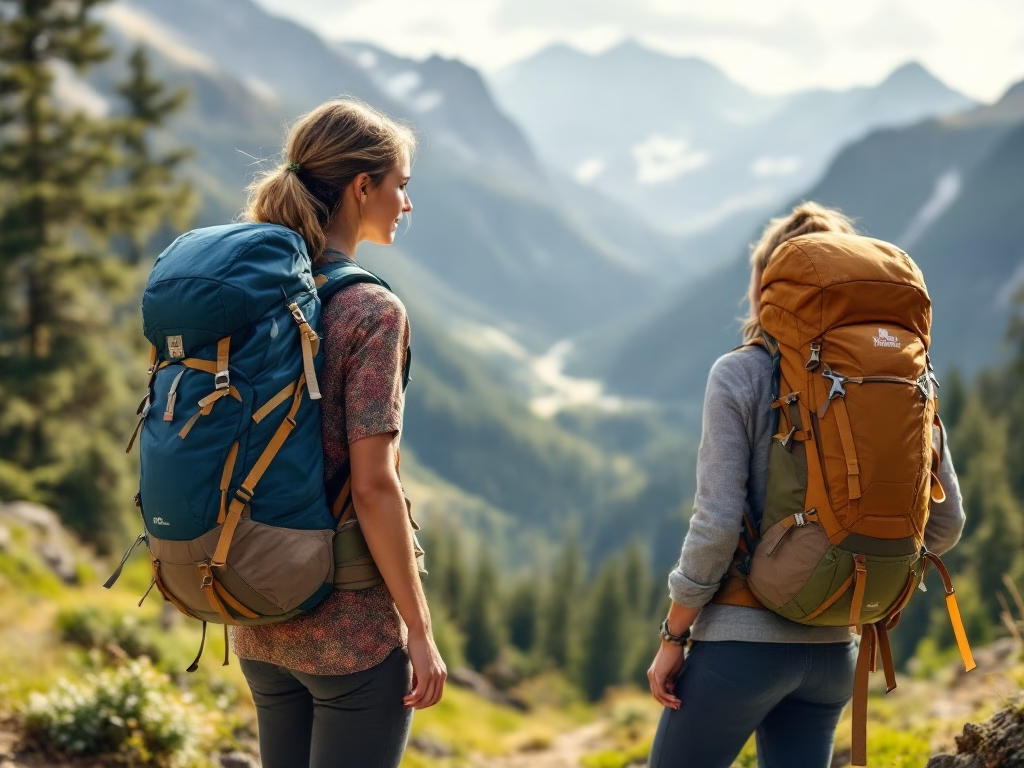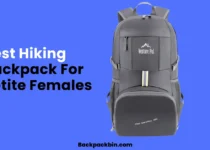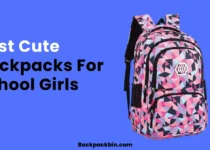Best Premium Petite Backpacks With Custom Fit Options

Finding the Best Premium Petite Backpacks With Custom Fit Options can feel like hunting for a unicorn. If you’re a woman who used to hit the trails regularly, you know that off-the-shelf packs often swallow your frame or leave you aching in all the wrong spots. In this guide to Best Premium Petite Backpacks With Custom Fit Options, you’ll learn how to dial in torso length, hip‐belt position, and pockets so every mile feels effortless. Let’s get you set up with gear that truly fits your body and your adventures.
Assess Your Fit Needs
Getting a pack that actually suits your frame starts before you even click “add to cart.” These basics let you narrow your list to bags you can fine-tune to your body.
Measure Torso Length
Your torso, not your height, dictates which frame length will sit right on your back.
- Stand against a wall, have a friend mark C7 (base of your neck) and the top of your hip bones.
- Measure the distance between those two points.
- Compare with manufacturer charts—if you’re under 16 inches, you fall in the petite category.
For a deeper dive, check how to measure torso length for hiking packs when you’re petite (/how-to-measure-torso-length-for-hiking-packs-when-you-re-petite).
Test Adjustable Suspension
Load lifters, adjustable y-straps, sliding torso tracks—these all let you tweak how the pack transfers weight.
- Look for packs with continuous suspension systems you can fine-tune on the go.
- Make small adjustments until the shoulder straps gently hug without digging in.
Learn why load lifters matter so much for petite hikers (/understanding-load-lifters-and-their-importance-for-petite-hikers).
Check Hip Belt Fit
Most of the pack weight should ride on your hips, not your shoulders.
- Wrap the belt around your hips, not your waist, at the top of your pelvic bones.
- Buckle then snug until it feels secure but not crushing.
- A well-padded belt that sits low on small hips is a game-changer.
See how to adjust hip belts for a short torso on the trail (/how-to-adjust-hip-belts-for-a-short-torso-on-the-trail).
Review Top Petite Packs
Here are premium models built to slip right onto a shorter frame. Each offers its own take on fit, features, and trail-ready comfort.
Gregory Jade 38 XS
Capacity: 36 L | Torso fit: 13–16 in | Weight: 3 lbs 6 oz
- Built-in rain cover keeps gear dry on sudden downpours
- Front-panel access makes packing and unpacking a breeze
- Generous hip belt pockets for snacks and small essentials
Why you’ll love it: The Jade’s suspension hugs your curve without feeling bulky, and the front zip means you’re not doing the awkward reach-around to the bottom of your pack.
Gregory Deva 60 XS
Capacity: 58 L | Torso fit: 13–16 in | Weight: 4 lbs 10 oz
- Top-loader design with floating lid for extra volume
- Contoured hip belt and deep torso channel for breathability
- Adjustable torso track for precise fitting
Why you’ll love it: Despite its size, the Deva wears like a daypack thanks to its women-specific harness. It’s been a trusty companion on global adventures and shows no signs of slowing down.
Osprey Fairview 40
Capacity: 40 L | Torso fit: 15–20 in | Weight: 3 lbs 9 oz
- Hybrid travel-hiking pack with clamshell opening
- Zip-off harness and hip belt doubles as a daypack
- Women’s XS/S harness tailored to shorter torsos
Why you’ll love it: If you split your time between flights and trails, the Fairview’s carry-on dimensions and stowaway straps make transitions seamless.
Six Moon Designs All Day Carry
Capacity: 35 L or 45 L | Torso fit: Adjustable 13–18 in | Weight: 1 lb 9 oz (35 L)
- Ultralight wire frame with custom harness and hip belt
- Generous external pockets for quick-grab items
- Roll-top closure for flexible volume
Why you’ll love it: The adjustable harness truly morphs to your shape, and the 35 L size hits that sweet spot for carry-on-only hiking trips.
Explore LiteAF Custom Backpacks
LiteAF stands out by letting you build your pack from the ground up, choosing almost every detail to match your preferences.
UltraWeave™ 46L Curve Full Suspension
- Ultralight 210D ripstop fabric designed for durability
- Full-suspension frame molded to your custom torso length
- Range of pocket and loop options on front and sides
UltraWeave™ 40L Curve Full Suspension
- Same build as the 46L but trims 6 ounces for lighter loads
- Perfect for fast-packing or minimalist thru hikes
ECOPAK™ 20L Curve Frameless
- No internal frame for days when you need less bulk
- Eco-friendly fabric blend and streamlined profile
Customization Lead Time
Once you finalize your specs, expect your pack to ship in about six weeks. That wait gets you a pack cut exactly for your back, your belt, and your load.
Compare Suspension Options:
Suspension is more than a frame—it’s how the pack moves with your body and shifts weight to the right spots.
Adjustable Torso Systems
- Sliding tracks let you fine-tune shoulder strap height
- Dial-in lengths in half-inch increments
Padded Hip Belt Designs
- Look for belts that taper toward the ends to avoid digging
- Some brands offer removable belts so you can swap in a smaller size
Shoulder Strap Shapes
- S-curve straps follow the natural line of petite shoulders
- Narrow cuts prevent slippage and minimize pinch
Curious about strap shapes for narrow shoulders? See our guide on choosing the right shoulder strap shape for shorter shoulders (/choosing-the-right-shoulder-strap-shape-for-shorter-shoulders).
Compare Pocket Configurations:
Your tool pockets and side pockets should work where you need them—no fumbling mid-step.
Half Mesh Front Pocket
Great for stashing jackets or maps for quick access.
Roll-Top and Side Pockets
Adjustable volume lets you expand or compress your gear space.
Hydro Port and Sleeve
Internal hydration sleeve keeps your bladder secure and accessible.
Webbing Axe Loop
Add trekking poles or an ice axe without swinging weight.
Choose Capacity and Use:
Picking the right liter range depends on your trip length and gear list.
Day Hikes vs Overnight
- Under 30 L: ideal for day trips or fastpacking
- 30–45 L: best for weekend overnights with compact gear
For tips on capacity, check how to choose the right capacity backpack for petite day hikes (/how-to-choose-the-right-capacity-backpack-for-petite-day-hikes).
Travel vs Hiking Packs
Some packs double as travel luggage, with clamshell openings and lockable zippers. Others focus strictly on trail performance, trading travel-friendly features for hydration compatibility and lighter weight.
Frequently Asked Questions:
What makes a backpack “premium petite”?
Premium petite packs combine high-quality materials with smaller frame fits and extra adjustability, ensuring comfort and durability without overhang or weight strain.
Are custom backpacks worth the wait?
If standard packs leave gaps between your body and the harness, a custom-fit bag can prevent hotspots and improve load transfer, making the extra lead time worthwhile.
How often should I adjust suspension mid-hike?
A quick tweak at the base and midway through your day helps keep weight centered and prevents shoulder or hip fatigue.
Can I swap hip belts on non-custom packs?
Many premium brands let you remove and replace hip belts—just confirm the belt channel matches before ordering a different size.
Do frameless packs work for heavier loads?
Frameless designs suit fast-packers or light gear loads under 20 lbs. For heavier loads, a minimal frame—or a pack with a curve suspension—offers better support.
How do I prevent shoulder straps from slipping?
Look for packs with S-curve straps, sternum clips, and non-slip fabrics on the inner shoulder area. Read how to prevent shoulder slippage with narrow strap designs (/how-to-prevent-shoulder-slippage-with-narrow-strap-designs).
Are rain covers necessary for petite packs?
Even petite packs can lose water resistance at seams. Built-in covers or removable options keep gear dry without adding bulk.
Wrap Up Your Decision:
Finding the best premium petite backpacks with custom fit options means starting with accurate measurements, then zeroing in on models that let you tweak suspension, hip belts, and pockets. Whether you opt for a ready-to-wear Gregory or Osprey model, or you build your dream pack from scratch with LiteAF, proper fit is the key to pain-free miles. Now that you know what to look for, grab your tape measure, bookmark your favorites, and get ready to hike happier on every trail.


